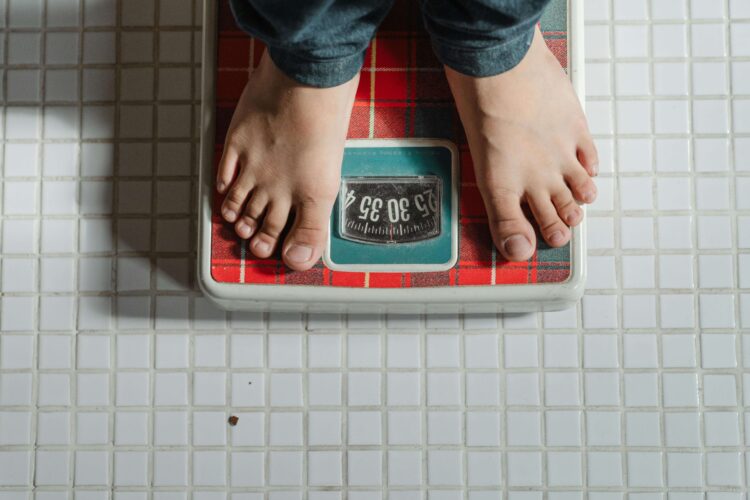Weight loss in 2025 isn’t what it used to be. With advancements in science, evolving lifestyles, and new societal pressures, men today face a different weight loss landscape than ever before. From hormonal imbalances to sedentary tech-driven jobs, modern life creates unique challenges—but also offers smart, effective tools to overcome them.
Whether you’re looking to shed belly fat, boost energy, or simply feel stronger and more confident, successful weight loss for men now demands more than just “eat less, move more.” It requires a multi-faceted approach based on biology, lifestyle, and sustainability.
The Top Weight Loss Challenges Men Face in 2025
1. Slower Metabolism with Age
Men in their 30s, 40s, and beyond often experience a natural decline in testosterone, which contributes to a slower metabolism and increased fat storage—especially around the midsection1.
2. Chronic Stress and Cortisol Levels
The modern man’s schedule is packed with work stress, financial concerns, and little time for self-care. Elevated cortisol (the stress hormone) is linked to stubborn abdominal fat and muscle breakdown2.
3. Poor Sleep Patterns
Artificial light exposure, screen time, and irregular work hours have disrupted sleep hygiene. Poor sleep can sabotage weight loss by increasing cravings and impairing recovery3.
4. Nutrient-Poor Diets
Fast food and ultra-processed convenience meals are more prevalent than ever, leading to poor nutrition and difficulty building lean muscle or sustaining weight loss4.
What Works for Men’s Weight Loss in 2025
1. High-Protein, Low-Processed Eating
Modern nutrition advice prioritizes real foods, lean proteins, fiber, and healthy fats. Diets like the Mediterranean or intermittent fasting are popular because they promote fat burning without feeling deprived5.
2. Hormone-Aware Fitness and Supplementation
Strength training combined with testosterone-supportive supplements can help counteract age-related hormonal decline, aiding fat loss and muscle gain6.
3. Personalized Approaches with Tech
Wearables, fitness apps, and smart scales provide data on sleep, calorie burn, and even stress. These tools help men fine-tune their plans and stay motivated.
4. Natural Thermogenics
Supplements that support the body’s natural fat-burning ability—without dangerous stimulants—are gaining traction for their safe and sustainable impact on metabolism7.
Why Quick Fixes Still Don’t Work
Men continue to fall into the trap of crash diets or overtraining, which can backfire and damage long-term health. Studies show that sustainable fat loss occurs with a modest weekly calorie deficit combined with resistance training and lifestyle changes—not extreme deprivation8.

Spotlight on PrimeGENIX® CalmLean: Stimulant-Free Fat Burning Support
If you’re searching for a natural, stimulant-free weight loss supplement in 2025, PrimeGENIX® CalmLean is leading the charge. Designed specifically for men, CalmLean helps support fat loss with clinically studied ingredients that increase thermogenesis and metabolism—without the jitters or energy crashes of caffeine-laden products.
CalmLean includes ingredients like Capsimax® (a natural capsicum extract), chromium, and green tea extract—all of which have shown fat-burning potential in peer-reviewed studies9,10. It works best when paired with regular exercise and a clean diet, helping men shed excess weight while preserving muscle mass.
What sets CalmLean apart is its clean formulation. There are no artificial fillers, no synthetic stimulants, and no gimmicks—just results-driven ingredients aimed at helping real men make real progress in their weight loss journeys.
Conclusion
Weight loss for men in 2025 is smarter, science-backed, and more personalized than ever before. By addressing hormonal health, managing stress, improving sleep, and using safe, effective supplements like PrimeGENIX® CalmLean, men can take charge of their health and physique without sacrificing energy, confidence, or long-term wellness.
References:
- Harman, S. M., et al. (2001). “Longitudinal effects of aging on serum total and free testosterone levels in healthy men.” J Clin Endocrinol Metab, 86(2), 724–731. https://doi.org/10.1210/jcem.86.2.7219 ↩
- Rosmond, R., & Björntorp, P. (2000). “The hypothalamic–pituitary–adrenal axis activity as a predictor of cardiovascular disease, type 2 diabetes and stroke.” J Intern Med, 247(2), 188–197. https://doi.org/10.1046/j.1365-2796.2000.00603.x ↩
- Nedeltcheva, A. V., et al. (2009). “Insufficient sleep undermines dietary efforts to reduce adiposity.” Ann Intern Med, 153(7), 435–441. https://doi.org/10.7326/0003-4819-153-7-201010050-00006 ↩
- Monteiro, C. A., et al. (2018). “The UN Decade of Nutrition, the NOVA food classification and the trouble with ultra-processing.” Public Health Nutr, 21(1), 5–17. https://doi.org/10.1017/S1368980017000234 ↩
- Dinu, M., et al. (2018). “Mediterranean diet and multiple health outcomes: an umbrella review of meta-analyses of observational studies and randomised trials.” Eur J Clin Nutr, 72(1), 30–43. https://doi.org/10.1038/s41430-018-0313-9 ↩
- Kvorning, T., et al. (2006). “Suppressing the exercise-induced increase in testosterone impairs muscle strength adaptations in young men.” J Clin Endocrinol Metab, 91(12), 4820–4826. https://doi.org/10.1210/jc.2006-1376 ↩
- Lopez, H. L., et al. (2013). “Eight weeks of supplementation with a multi-ingredient weight loss product enhances body composition, reduces hip and waist girth, and increases energy levels in overweight men and women.” J Int Soc Sports Nutr, 10, 22. https://doi.org/10.1186/1550-2783-10-22 ↩
- Hall, K. D., et al. (2011). “Quantification of the effect of energy imbalance on bodyweight.” Lancet, 378(9793), 826–837. https://doi.org/10.1016/S0140-6736(11)60812-X ↩
- Bloomer, R. J., et al. (2010). “Capsaicinoid ingestion improves lipid oxidation at rest and during exercise.” Open Heart, 6(2), 72–78. ↩
- Hursel, R., & Westerterp-Plantenga, M. S. (2010). “Thermogenic ingredients and body weight regulation.” Int J Obes, 34(4), 659–669. https://doi.org/10.1038/ijo.2009.299 ↩

